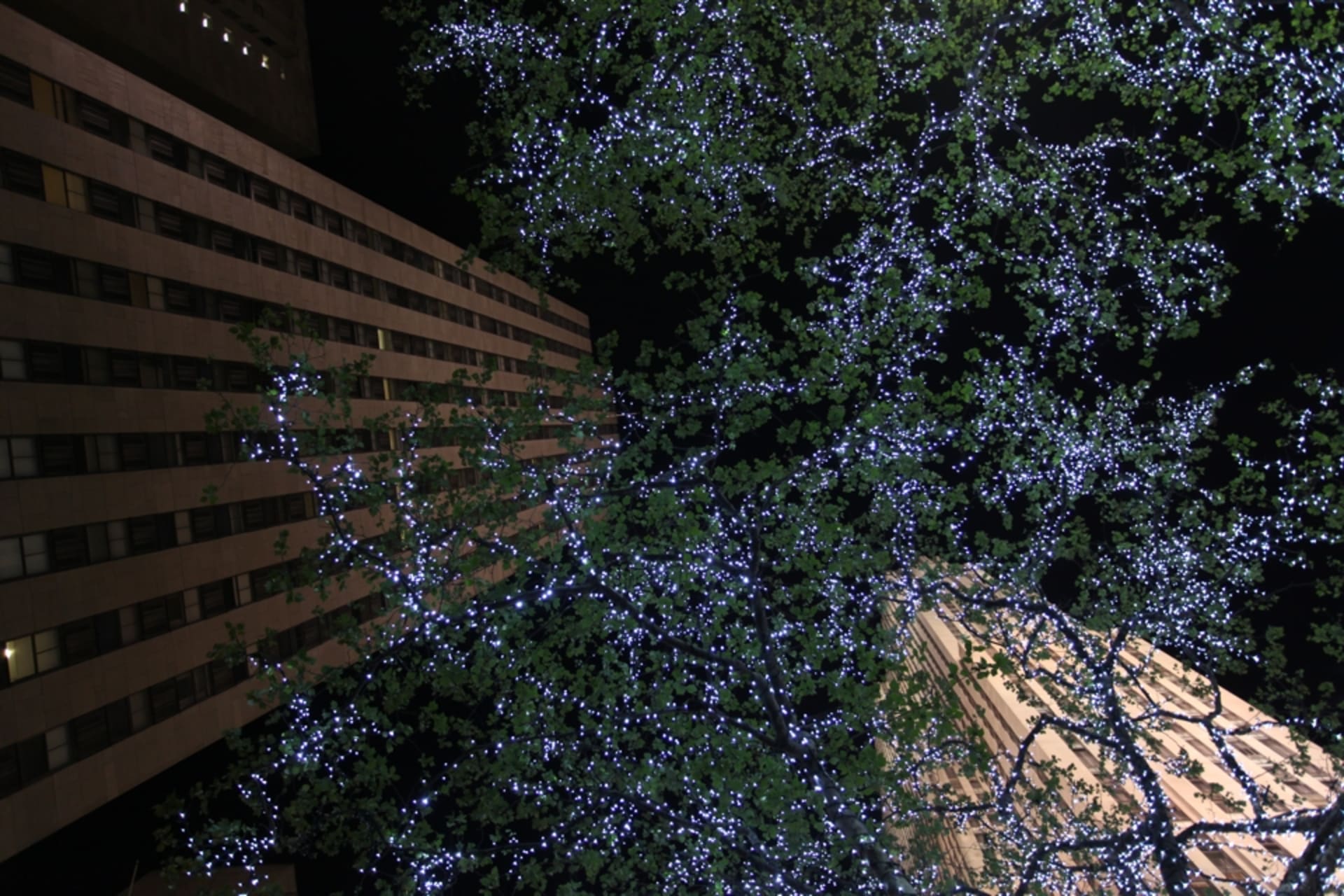
Geeta Dayal on Kraftwerk
I had the privilege of seeing three Kraftwerk shows at MoMA, so instead of writing straight up reviews the whole time, which would have gotten boring, I opted to spend Trans-Europe Express observing other people’s reactions—particularly Afrika Bambaataa and Ryuichi Sakamoto of Yellow Magic Orchestra fame. It was a very different way of seeing and hearing the concert; through the filter of the reactions of two of the most influential Kraftwerk fans in pop music.
Sakamoto stood in the front row and off to the side, always near Ralf Hütter. I knew what Sakamoto looked like because I interviewed him for Groove six or seven years ago. The funny and endearing thing was that he kept snapping pictures of the band and singing along the whole time silently. It seemed to me like he knew pretty much every word. He was also really well dressed in a grey wool suit jacket—he had this sleek, elegant appearance with his white hair bopping subtly to one of Kraftwerk’s most dignified tracks, “Europe Endless”. It all somehow made perfect sense.
“Europe Endless” is one of those songs that the band never plays live. You’ll hear it occasionally on a bootleg from the seventies, but at some point they just cut it. That’s what made it so special to hear in their obviously updated version at the MoMA. My guess is that the band as- sumed that all of the hip-hop and electro kids would be coming to see Trans-Europe Express, so they really put a lot of effort into their set that night. It was certainly a highlight for me, and it looked like for Sakamoto as well. But it was a strange contrast to, say, “Radioactivity” in which the band had yet to “update” the list of nuclear disasters lyrically and visually: Sellafield, Harrisburg, Chernobyl, Hiroshima . . . Where was Fukushima? Sakamoto, who has raised lots of money for victims of the disaster, appeared almost puzzled during the song.
When Kraftwerk came to New York last time in 2005, I wrote about it in the Village Voice. I was up near the front row in a sold-out Hammerstein Ballroom, which was very, very different to the MoMA experience. I mean, normal people could go and it was much more mixed, both ethnically and age-wise. There were art school kids and engineers, black kids and white kids, teenagers and sixty year-olds all losing their mind to “Trans-Europe Express”, which the band played pretty close to the end of their set. Everybody was dancing and letting loose. That’s something that turned me off a bit about how it went down at the MoMA: the entire audience seemed like they were from the press or were VIPs, and they definitely weren’t dancing—except a few of the older heads, like Sakamoto and Bambaataa. At a certain point, I was just counting people: here’s the guy from Rolling Stone, there’s Sasha Frere-Jones from The New Yorker, in the back is Jon Pareles from The New York Times, there’s Michael Stipe, here’s Julian Schnabel . . . Where were all the fans?
Obviously, people have written about the Kraftwerk-hip-hop connection to death, but it was fun watching Afrika Bambaataa, who stood way in the back with a couple of people from the Zulu Nation that pretty much accompany him every- where. I actually saw him air-keyboarding at one point and singing along with “The Man-Machine”. Honestly, watching Bambaataa at the MoMA so obviously enjoying himself was as much a highlight as anything else I saw or heard.~
Earlier this year we where reporting from the Kraftwerk Retrospective 1 2 3 4 5 6 7 8 at New York’s MoMa, where we collected a lot of interesting takes on the legendary techno innovators from the likes of Juan Atkins, Afrika Bambaataa, Klaus Biesenbach and more – Read them here.
Published November 21, 2012. Words by Geeta Dayal.
